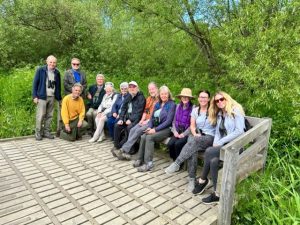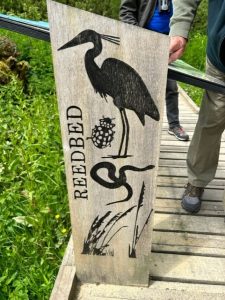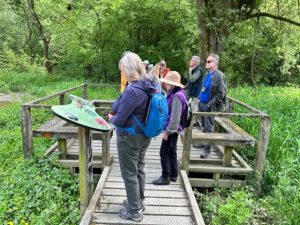On a return visit to Ferring Conservation Group Stuart Card gave an interesting and informative presentation, this time on Barn Owls and the vital work that is being carried out by the Sussex Barn Owl Study Group under the umbrella of the Sussex Ornithology Society.
Stuart shared his enthusiasm for this attractive little owl and began by advising members that populations had declined (it is believed that changing agricultural practices and the development of barns and old buildings could be the cause of this) while the introduction of owl nesting boxes is helping the species and encouragingly they are now recovering.
Stuart advised the audience that it is crucial to maintain ongoing and consistent monitoring of the Sussex Barn Owl population. The Study Group regularly ring birds and record their nest sites and are always on the lookout for volunteers to help erect new nest boxes. With around 90% of Barn Owls now breeding in nest boxes stringent management will enable these charming birds to thrive and increase in number.
Barn Owls are avid hunters and scour open grassland for small mammals such as voles, mice, shrews and rats assisted by their incredible long-distance vision, sensitive hearing and silent flight. Female Barn Owls are larger than males and usually breed between March and August (this usually depends on food supply). Around 4 to 6 eggs are laid, hatching just over a month later and chicks are ready to fledge at around two months old.
Graham Tuppen took to the floor after a break for refreshments with news that he had ventured up to Highdown Gardens and had been amazed at the flowers of the Handkerchief Tree with its beautiful white flowers on display, his photograph did indeed look just like handkerchiefs hanging on its branches. Graham reported that Comfrey was growing amongst the Cow Parsley on the banks of the Rife and the Blackthorn and Hawthorn were in bloom. Yellow Flag Iris were in the Lagoons and Marsh Orchids were on display in this area too. A Mallard Duck with 4 ducklings were seen plus Moorhens with their young but sadly there had been a report of an injured Little Owl in the Plantation. There had also been a sighting of 3 dolphins around 200 metres out to sea off the Bluebird Café area of the beach.
Ed Miller concluded the May meeting with a planning update and advised the Group that a planning application had been submitted to Arun DC for rebuild of a property in Ferring Close and at 1, Sea Drive an additional house in the back garden. Ed advised that Persimmon were still awaiting a decision from the Court of Appeal regarding their further appeal.
Ed reported that apart from these it was ‘All quiet on the Western and Eastern Front’.



